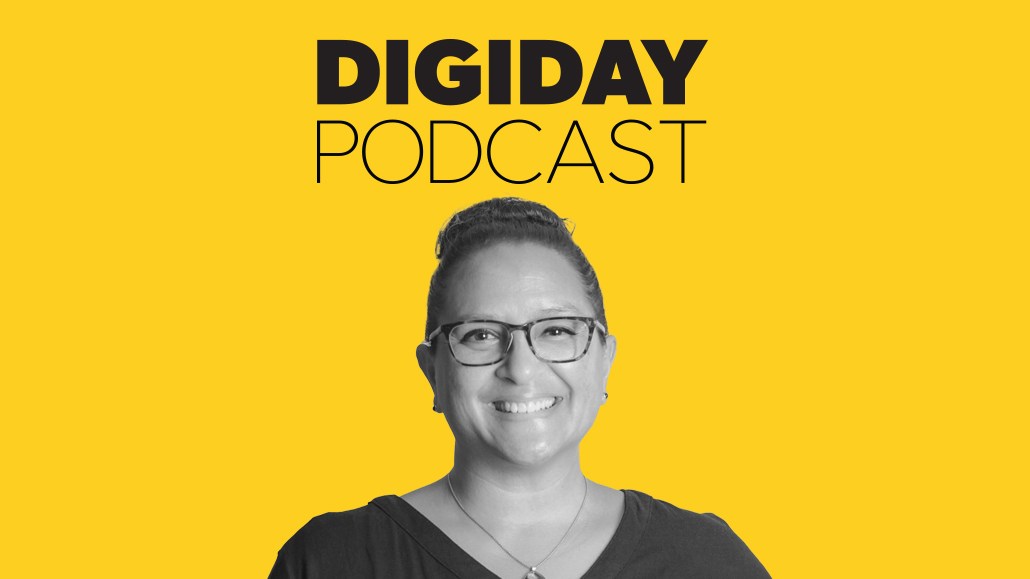Third-party cookies are hanging on, but Epsilon says brand marketers should still focus on first-party data

Subscribe: Apple Podcasts • Spotify
Google may have changed course on its approach to third-party cookie deprecation on Chrome, but that doesn’t mean brand marketers should take their foot off the pedal when it comes to testing cookie-less targeting solutions.
At least that’s what Rachel Cascisa, vp of platform adoption at Publicis’ marketing tech company, Epsilon, believes. As it is, recent studies from Adobe and Epsilon have found that marketers are “considerably less ready” for third-party cookies to disappear from the advertising ecosystem in 2024 than they were in 2022. And while Chrome may not experience total deprecation after all, by and large industry executives are estimating a steep drop off, upwards of 70% to 80%.
“I think that you can liken it to procrastinating to study for an exam,” said Cascisa. But instead of waiting to study, she said Google’s announcement “gives opportunities for [marketers] to focus on things that are third-party cookie deprecation adjacent. Things like first-party data strategy. That is just a good strategy for marketing, regardless of whether cookies will be deprecated or not.”
On the latest episode of the Digiday Podcast, Cascisa discusses the different strategies that brand marketers should be putting to the test now, prior to Google firming up its proposed cookie deprecation plan, including clean rooms, data collaboration and ID bridging. She also discusses why or why not these solutions are working for marketers right now, and where cookie-less targeting is still lacking.
Below are highlights from the conversation, which have been lightly edited and condensed for clarity.
First-party data preparedness
It is really a case of the data-haves and the data-have-nots. So, an example of a data-have is a retailer. They are swimming in data. They’ve got all the data, all the buying data. They’ve got SKU-level data. They’ve got patterns, you know, you name it, they’ve got it.
And then you look on the other side of that and it’s the CPGs, who are the data-have-nots. They have all the products, they have all the SKUs, but none of the data. And so when you think about a first-party data strategy, the same strategy is not going to meet the needs of both of those types of marketers.
If you are a data-have, you want to make sure that you’re getting your data house in order. So making sure that all of the places that you’re collecting that first-party data is converging into a single view of your consumers [like a customer data platform (CDP)]. … If you’re a data-have-not, it’s harder, but it’s not impossible. This is where clean rooms can come into play.
The problem with cookie-less solution adoption
Future-proofed is one of those really fun buzzwords that we all love to talk about, but what we’re finding — and what these new studies that you just wrote about from both Adobe and from Epsilon are showing — is that, in fact, these solutions that are not solving the problem, and so marketers are confused.
[For example,] a clean room seemed like a really great solution to allow access to really sensitive, critical, proprietary data from a ‘data-have’ to a ‘data-have-not’ in a way that they can do some analytics, create some audiences, even activate and those kinds of things. Well, what we found, or at least in my experience, is that … while technologically it is fairly straightforward when it comes to the business transaction and the relationships … practically, that’s where it runs into issues. So there’s a lot of operational lift that is required in order to make those data collaborations and relationships work really well.
CDPs still worth the investment now, despite their flaws
While CDPs and clean rooms are cumbersome, they’re probably your best bet long term. … Just really ask the questions of, ‘Am I happy to walk into this relationship with you? How are we going to operationalize this? What are the KPIs that we’re driving towards?’ to make sure that we’re all seeing value out of this collaboration or this relationship.
You have to get your data into a place. … If you don’t have [it] in a place where you can actually get a full view of what’s going on and you don’t have a way to resolve all of that data into a single understanding of each of those consumers that you want to talk to, you’re still going to be in a mess whether cookies exist or don’t.
More in Marketing

Best Buy, Lowe’s chief marketing officers explain why they launched new influencer programs
CMOs launched these new programs in response to the growing importance of influencers in recommending products.

Agencies create specialist units to help marketers’ solve for AI search gatekeepers
Wpromote, Kepler and Jellyfish practices aim to illuminate impact of black box LLMs’ understanding of brands search and social efforts.

What AI startup Cluely gets — and ad tech forgets — about attention
Cluely launched a narrative before it launched a tool. And somehow, it’s working.








